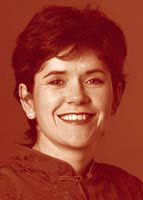Learning the three Rs: recruit, retain, rethink
Lin Arigho argues that in a fiercely competitive market, all work and no play is bad for business and potential employees become burned up and tired out

Recruitment and retention of the brightest and best. That’s the hot issue for the design industry, but consultancies that think that competition has to constantly be maintained at a fast and furious pace will lose out.
It’s an expensive business finding the right calibre person for a job, and if their workload means they’re working ’24-7′ yet still feel too pressurised to let up, there’s something wrong with the culture of their organisation. Strategy, commercial acumen and the freedom to be innovative are what makes one group the equivalent of Guinness and another the ad rejected by Shake ‘n’ Vac.
A consultancy or sector that loses people in their mid-30s or mid-40s is losing experience and expertise. Of course, it’s important to have injections of new blood. Young people are dynamic and innovative, know what’s funky and what’s pants. But older and wised-up strategists should be able to tap into that, combining new ideas and cultural touchstones with the maturity to know how to make them work in practice.
Balance in the workplace is as important as maintaining a balance between work and the rest of your life. Introducing new young people brings in the fresh factor, but it will also keep your turnover high. For a small consultancy with, say, 18 staff, the departure of several employees in any one year can only be harmful for continuity and the smooth operation of business.
Average recruitment costs are increasing by between 9 and 11 per cent each year. For a small to medium-sized group, that can amount to 40 000.
There is a misconception that in a recession you don’t have to look after your staff because they will be desperate for a job. In fact, the opposite is true – good people can always get another job, so they are the ones who need to be genuinely cared for.
That’s not only because staff whose welfare is catered for will be more productive – a necessary factor to keep your group buoyant during a recession – but also because during difficult economic downturns, a high turnover of staff is something that no sensible company can afford to risk happening.
If you are attempting to improve your cost base, you don’t want people leaving. The cost of losing a middle manager will be actually multiplied by five times their salary, in terms of valuable time, resources, person hours, lost team morale, and training and induction programmes.
All of which takes your concentration off the ball – in other words, meeting the challenges that already exist within a tough market, and looking to open up new opportunities.
David Stocks, founder and creative director of SAS, puts it simply, ‘The truth is that it is the work environment and not money that gives people job satisfaction.’
Creating a culture that allows self-expression is why people choose to stay with the consultancy long-term, he believes. ‘We recognise the importance of staying in touch with the world outside of work, and building a culture of life-long learning through programmes that both reward staff and enrich the business,’ he says.
These aims are achieved through a variety of ways, such as the budget set aside for designers to pursue their own projects or to research, film and report back on epoch-making locations such as the regeneration of Berlin or the Guggenheim in Bilbao.
David Stuart, creative partner with The Partners, looks on training as key in helping staff continue to grow. ‘As well as being an investment in young graduates, training stops experienced staff from feeling that their heads are touching the ceiling,’ he says.
His consultancy’s training reflects his belief that motivation comes from thinking as broadly as possible. ‘As well as practising our design and presentation skills, we have guests ranging from a Russian spy to a leading toy designer. Life is not all about a three by two ratio screen or a sheet of A4,’ he says.
The design industry is losing far too many talented individuals who are jumping ship and going client-side. Recruitment is an expensive business – so make sure you are being as cost-effective as possible.
In an uncertain economic market, the retention and support of valuable experienced staff is essential. Making sure that the culture of the organisation is one in which they can feel secure and focused is an especially worthwhile investment.
| Last year’s employment statistics | |
| New staff at leading design groups | 450 |
| Percentage increase in staff numbers | 21% |
| Average staff salary | 45 924 |
| Percentage increase in staff remuneration | 2% |
| Increase in director’s remuneration | 23% |
| Average income per head (gross) | 75 436 |
| Source: The Financial Performance of Marketing Services Companies 2001, Willott Kingston Smith |
-
Post a comment



